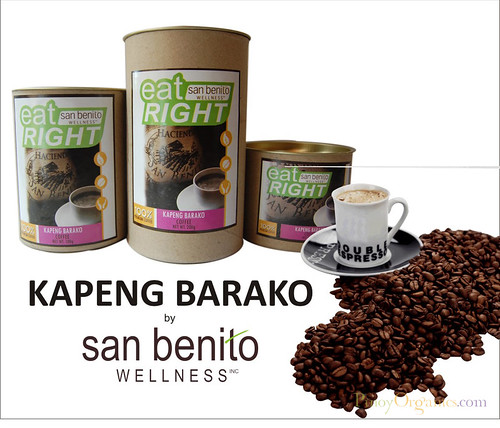Kapeng Ala Eh!
February 2, 2011 by PinoyOrganics
Filed under Food
Strong. Pungent. These are among the words used by coffee aficionados to describe our Philippine Liberica, Barako. It is the Tagalog word for ‘wild boar’ because this animal eats coffee leaves and beans.
Many stories have been told about how the first Barako tree was first planted in the Philippines. One story tells of how a Franciscan friar brought back coffee beans back in a monastery in Lipa. The other is of the Macasaet family planting a cutting of Barako from Brazil in Barangay Pinagtung-Ulan, San Jose Batangas in the 1800s. But no matter how different these stories may be, history tells us one thing for certain – that our much-loved Barako coffee started in Batangas and will continue to thrive gloriously there. Today, Barako coffee is predominantly grown in Batangas and in some areas in Cavite.
Batanguenos prepare Barako by boiling brown sugar and water together in a pot then stirring Barako grounds to it. They allow it to sit and brew for at least five minutes before straining. It is then served black.
But not everyone can appreciate the strong bitter taste and the sour aftertaste that pure Barako coffee can offer. This need conceived Barako gourmet blends and among those who produce these Barako Blends in Lipa, Batangas is Hacienda San Benito.
Hacienda San Benito’s Barako blend is made of 90% Barako coffee and 10% local Arabica coffee. The blend still retains the kick of Barako’s bitter taste but with the combined Arabica, the flavor mellows down creating a much smoother flavor. Its sweet and bitter combination is enjoyable not only on your tongue but also as it passes your throat. This can be attributed to its perfect roasting. Over-roasting makes coffee taste bitterer than its original flavor. Its packaging is also note-worthy. It is very eco-friendly and innovative. It looks like a can but made of something similar to the toilet paper core but of a different size and is covered by metal caps on both ends. Their 100 g. cans cost Php99 and their 250 g. cans cost Php166.
Another product worth checking out is their organic honey, which when harvested is directly flowed into their jars. It sells for Php257 for a 350 g. jar – a good sweetener for your coffee.
Hacienda San Benito is located at the foot of Mount Malarayat in Lipa, Batangas. It is a residential estate, which gives their lot owners the option to have their own organic farm. Their organic products are available in selected Rustan’s supermarkets in Makati, selected Shopwise branches and weekend markets such as Mercato Centrale. – ET





nice 🙂 i was wondering where can me buy this? I live in Subic
They have a booth in Mercato Centrale every weekend.
Hi! Can you give the contact details of San Benito Kapeng Barako? Thanks!